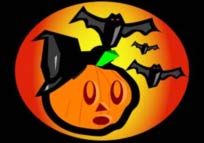Deadly Nightshade,
By Pearlmoon
Nightshade: Atropa Belladonna
Other Names: Dwale, Dwaleberries, Banewort, Death's Herb, Naughty Man's Cherries, Devil's Cherries, Fair Lady, Sorcerer's Berries, Witch's Berries
Gender: Female
Element: Water
Planet: Saturn
Magickal Uses: Used for divination and astral projection. It is said that an ancient order of priests drank an infusion of this herb prior to invoking Bellona the goddess of war. Also used, on the waning moon, for banishing bad habits and bad luck from one's life. Can also be used for banishing another person.
History/Lore: The ancient Greeks would drink an infusion of nightshade when they would visit the Oracle of the Delphi, and added the juice to their wine of the Bacchanals. During the Middle Ages it was used for all sorts of activities, from hallucinogenic purposes to torture to war. This was the plant that poisoned the troupes of Mark Antony during the Parthian Wars. Macbeth also used it when Duncan I was king of Scotland. Macbeth gave an army of Danes liquor spiked with the deadly nightshade during a truce. The torturers of this period used the plant as a means of gaining confessions from the innocent as well as the guilty. Witch's of the Middle Ages used nightshade as an ingredient in their brews due to it's side effects. When a person is under the effects of nightshade she/he experiences highly realistic hallucinations. These experiences are so realistic that one cannot differentiate between reality and fantasy. The plant has also been used for murder. Livia, the wife of the emperor Augustus, and Agrippina, the wife of Claudius, both used nightshade to kill unsuspecting victims. Livia even tried to kill Augustus, but he knew of her plan and didn't eat the food she had prepared for him. She finally succeeded in her quest by injecting the figs in Augustus's fig tree with atropine. (Who says persistence doesn't pay off?)
Growing And Cultivation: It is best not to plant seeds in autumn. Seedlings will not usually survive the late frosts of the season. The seeds or seedlings will grow best when planted in the spring or divided in the spring. Nightshade requires a well drained, moist, alkaline soil. It grows best in sun to partial shade. The alkaloid content of the plant is higher when grown in a sunny position and in warm dry summers. It's a perennial plant with erect, branched stems and pointed, ovate, leaves up to 8 inches long. Purple brown bell shaped flowers about 1 inch across appear during summer and are followed by shiny black berries 1/2 to 3/4 inch across with a persistent calyx. The whole plant as well as the root may be used when preparing it.
The potato and tomato plants, henbane, mandrake, and jimson weed are all in the same family as nightshade. Henbane, mandrake and jimson weed contain some of the same alkaloids found in the nightshade plant.
Medicinal Uses: Atropa Belladonna is used internally for asthma, kidney stones and gallstones, Parkinson's disease, myocardial infarction (or heart attack), hypotention, hyperacidity, gastric ulcers, colic and motion sickness. Also used as a premedication before surgery to dry up excess secretions. Used in excess it will cause dry mouth, loss of voice, enlarged pupils, aversion to light, confusion, respiratory failure and death.
Externally it can be used in liniments and bandages for rheumatic and muscular pain and in eye drops for ophthalmic diagnosis and surgery. Used also in homeopathy for sun stroke and painful menstruation.
WARNING!!! : This plant and it's alkaloids should be used by qualified practitioners only! Never, Never take this herb internally in any form. Never burn this herb unless you are in a very well ventilated area. (like out doors) This herb is poison. Use extreme caution when working with it. Why? Because it can kill you, that's why!



